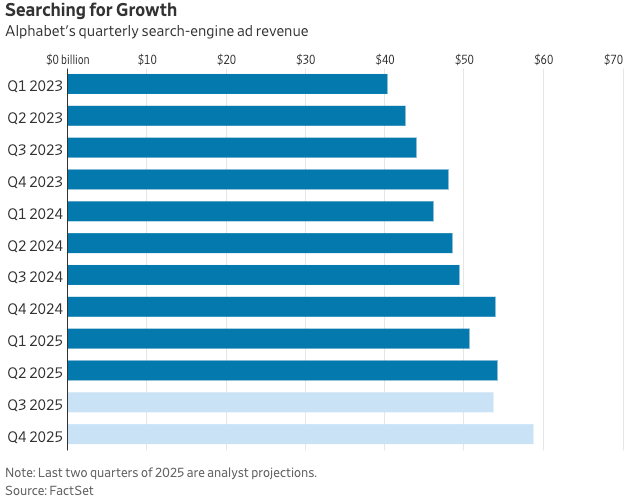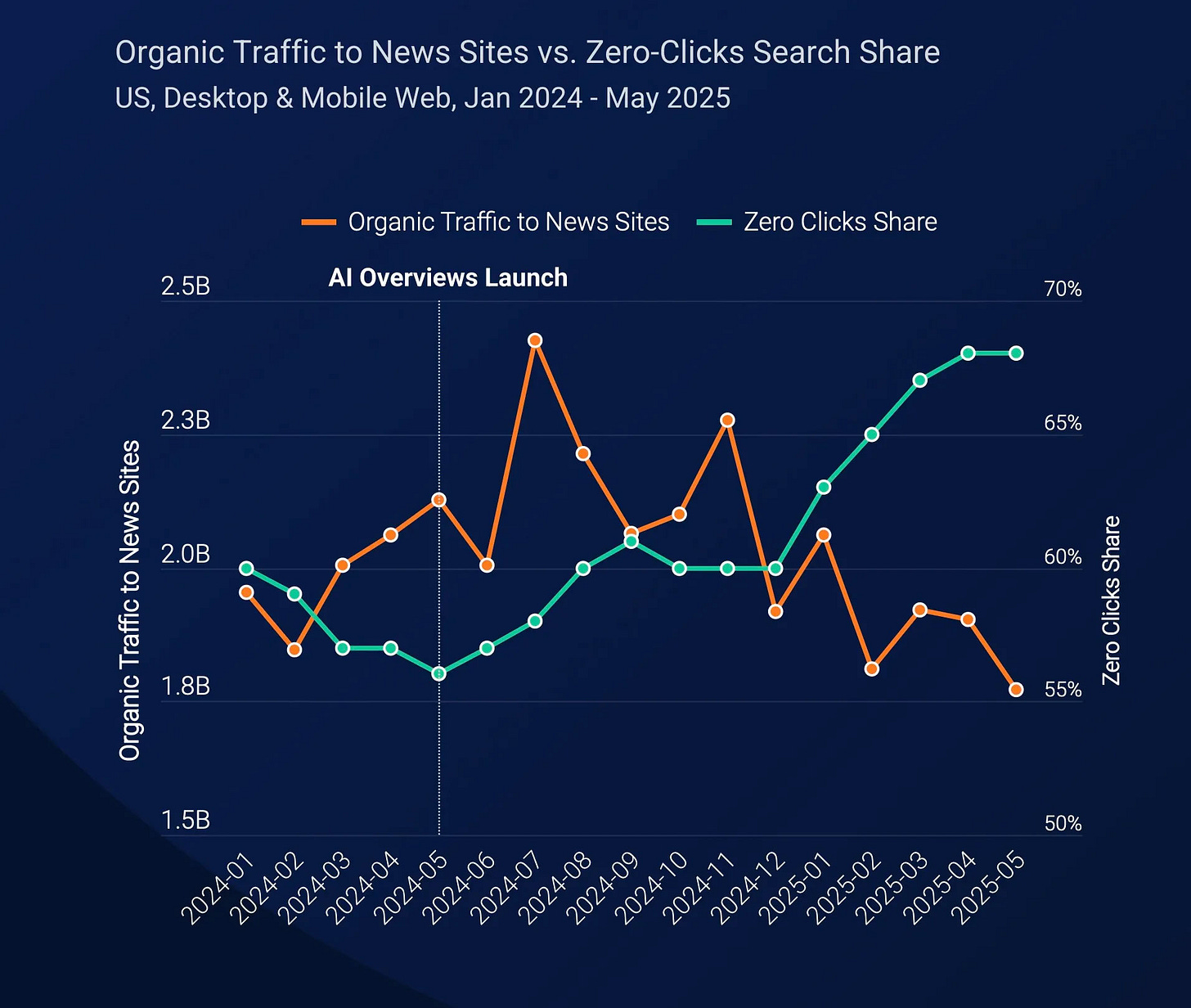Is Search Really Going Away?
Google Search may be the cat with nine lives.
It’s been another eventful few weeks in the world of AI. Before diving into the main story about where Search may be headed, based on clues from Alphabet’s earnings last week, here are five developments that show just how quickly the world is changing:
AI is already seen to be replacing entry-level roles across marketing, HR, and finance, pushing recent grad unemployment to 6.6% - above national levels. With companies automating early-career tasks or favoring seasoned hires, firms risk breaking their internal talent pipeline. Executives must explore AI-native onboarding programs and hybrid workforce models that preserve pathways for junior talent, balancing productivity gains with long-term succession planning.
Iconiq Capital is preparing to lead a $5 billion investment round in Anthropic, valuing the AI startup at a staggering $170 billion nearly triple its previous mark (established just in March) and placing it among the most valuable private AI companies globally. This signals surging investor appetite for foundational AI models, particularly those prioritizing safety and enterprise readiness. For business leaders, the move signals the growing impact that LLMs are poised to have across the enterprise
Walmart has tapped former Instacart Chief Product Officer Daniel Danker to lead global AI acceleration and is deploying four powerful “super agents” to unify its digital tools spanning customer service, supply chain, internal operations, and development. These agentic systems are poised to redefine how Walmart scales AI, drive e-commerce toward a 50% mix, and sharpen its competitive edge against Amazon. The initiative reflects a decisive shift toward AI-led retail transformation.
Meta’s strong earnings, with $7.14 per share on $47.5 billion in revenue, show that AI is becoming a real revenue driver. CEO Mark Zuckerberg reinforced his vision for personal AI superintelligence, supported by major investments in talent and infrastructure. Meta is positioning itself as a serious contender in the race toward superintelligence. What’s more Zuckerberg said that superintelligence is now in sight.
The Trump Administration’s AI Action Plan pushes over 90 steps to speed innovation, cut regulations, and expand AI diplomacy. Key orders target faster data center permits, relaxed export rules, and removal of DEI and climate mandates. This may unlock growth but also raise risks in sustainability and governance. Biden’s approach which I covered more than a year ago prioritized AI safety.
The Cat with Nine Lives
Last week, Google announced its earnings, and despite ongoing speculation about the decline of its dominance, the shift may not be happening as quickly as some pundits suggest. As Mark Twain famously said, “The reports of my death are greatly exaggerated.” The same might apply to Google.
Search revenue rose approximately 12% year-over-year to $54.2 billion. AI Overviews and AI Mode have now rolled out to 2 billion users globally, improving the product experience and driving a 10% increase in search query volume and a 4% rise in paid clicks. At the same time, Alphabet is investing heavily in its AI infrastructure, with capital expenditures projected to reach $85 billion. The Wall Street Journal separately reported that just 5.6% of U.S. desktop search traffic last month went to AI tools like ChatGPT or Perplexity, while 94.4% still went to traditional engines like Google and Bing, according to Datos.
But here’s the nuance: while investor sentiment around Search is improving, the success of AI Overviews and AI Mode is reshaping user behavior. These features are driving greater engagement with Google itself, but they are also resulting in fewer, though more qualified, clicks to external websites. The impact is most evident on desktop in Europe and within specific content categories. Also, 43 percent of AI Overview results include brand mentions, rising to 90 percent for AI Mode, helping explain why businesses are increasingly focused on how they show up in the foundational models. Yes, people are still turning to LLMs like ChatGPT, but it doesn’t appear to be coming at a significant cost to Search. Instead, for the most part, the pie is expanding.
The open question is whether the zero-click trend will extend to other regions, devices, and traditional high-intent verticals. If it does, it could significantly alter the role of search advertising for businesses. Users may still begin their journeys with Google, even as they explore tools like ChatGPT, Claude, or Perplexity, but the traditional promise of Search - delivering high-intent traffic to websites may be changing. That promise may now be shifting toward providing answers directly within the results themselves, with a greater volume of user action taking place inside Google Search results than ever before.
And that’s not the only shift underway. Search Engine Marketing isn’t disappearing; it’s evolving too. As users spend more time in chat interfaces, websites must now optimize for the large language model crawlers as well. In Google’s case, the company has emphasized that the core principles of good SEO - structured content, clarity, and authority - are still critical for visibility in AI Overviews and AI Mode.
One key difference lies in the nature of the queries. While traditional searches often involve one or two keywords, prompts to large language models average around 22 words. This means website content needs to be significantly longer, more in-depth, and directly responsive to the types of questions users ask in conversational interfaces. Yes, content strategy is having a renaissance!
Interestingly, the same principles apply when aiming for visibility in ChatGPT, Claude, and Perplexity. The techniques for visibility are beginning to converge. Rather than a sudden disruption, this is shaping up to be a broad-based evolution of the search and discovery ecosystem.
So no, the world isn’t ending. But the rules are quietly being rewritten.
Search Smarter: Five Moves for Business Leaders Now
Here are five specific actions businesses should take to adapt their search strategies for AI-influenced environments and the evolving Answer Engine Optimization (AEO) space.
Prioritize Structured, Authoritative Content Built on Real Search Behavior
Businesses should craft content aligned with how users actually search and make decisions—rooted in real-world intent signals, not guesswork. Use structured formats like FAQ sections, schema markup, and scannable headers. Integrate decision-driver categories such as price, trust, and comparisons to reflect authentic consumer considerations. This structure enhances performance in AI Overviews, ChatGPT, Claude, and Perplexity, which all favor clarity, relevance, and authority.Adapt for Funnel-Specific Visibility Across AI Engines
Ensure your content is mapped to each stage of the customer journey including awareness, consideration, and decision making. AI search models are increasingly simulating user personas to surface answers tailored to different funnel stages. Brands that want to win visibility need to provide content that speaks to each of those stages, whether it's thought leadership, product comparisons, richer product landing pages than what may have existed or post-purchase guides and FAQs.Optimize Content for LLM Discovery, Not Just Traditional Crawlers
Generative engines favor conversational query resolution. Instead of just optimizing for keywords, focus on creating content that directly and comprehensively answers likely user questions. Use long-form, high-detail content that mirrors the 20–25 word query structures typical of LLM users. Also, track which domains and content types are being cited by AI systems as this is now the clearest signal of visibility. There are several tools I’ve worked with that can help monitor and improve your brand’s visibility within LLMs.Continuously Monitor AI Behavior Variability and Source Citations
Because AI engines personalize responses based on memory and training data, businesses must actively simulate a variety of user personas to track visibility shifts. Reverse-engineer prompts across engines and monitor which third-party domains are winning citations in your space - especially for unbranded, decision-oriented queries. This will help you respond to shifting logic, retrain your prompt strategies, and identify content gaps. Also keep in mind that LLMs are probabilistic, which means it is isn’t enough to use a tool to track your visibility once, you need to query it many times over to truly assess how you’re showing up.Rebalance Paid vs Organic with AI Context Flexibility in Mind
As answer engines and AI Overviews from Google reduce reliance on traditional link-based SERP traffic, paid clicks become rarer but more valuable. Reallocate spend toward content production, AI citation monitoring (there are several strong players in the space whom I’ve studied), and semantic optimization but don’t ignore traditional SEO. Additionally, adopt middleware that can plug into any AI engine. This makes your strategy durable as LLMs evolve, and ensures future integration with their crawlers without technical disruption.
Key Takeaways:
Search is evolving from a keyword-match ecosystem into an intent-aligned, AI-mediated discovery engine both within Google Search and more directly in the large-language models. Brands must now optimize for being cited by the model and not just found by a user. The new competitive edge lies in producing trusted, decision-relevant content that performs across funnel stages, AI engines, and user types at scale.
Where I’ve been
It’s been a meaningful month of connecting with business leaders across the country. I had the privilege of keynoting at a corporate retreat for one of the largest financial advisory firms in the U.S., speaking to 160 of their marketers over Zoom. While they were gathered in Seattle, I joined from Pittsburgh, where I was visiting family on a long-planned personal trip.
The session went very well, thanks in part to one small but important request: I asked that a few attendees be on camera, rather than just appearing as specs in the wide-shot conference feed. Seeing faces made all the difference in creating a more engaged and effective conversation.
Earlier in the month, I was also at the MMA CEO & CMO Summit in Santa Barbara and what an impactful two days it was. With its strong research foundation and direct ties to business outcomes, the summit grounded the AI conversation in real-world experiments, professional experience, and data-backed insights. Well done to the MMA team. I’ll definitely be back next year.
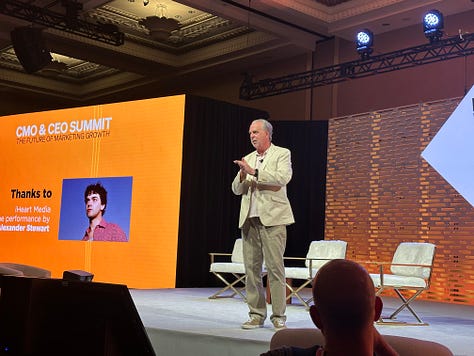
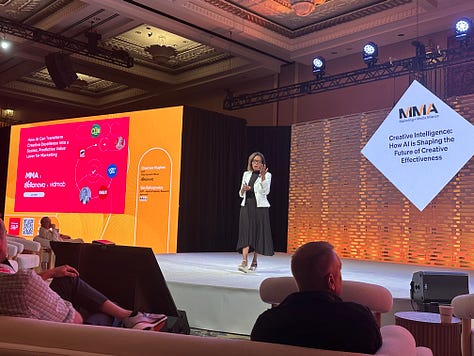
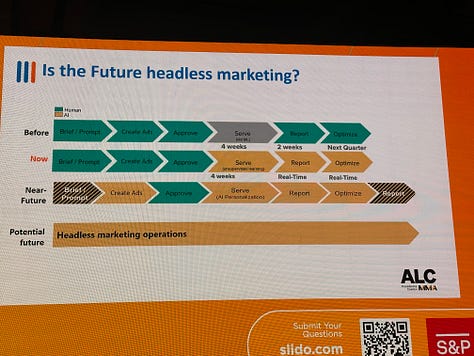
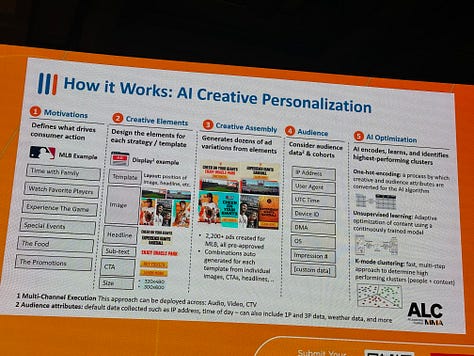


What I’m reading
AI Models Can Send "Subliminal" Messages to Each Other (Futurism)
Dropouts raise$28M for their AI marketing automation startup (Techcrunch)
Researchers may not understand their advanced AI models (Yahoo)
Leaders will need to learn how to manage AI Agents (World Economic Forum)
What I’ve written lately
The Myth of Creative Immunity (July 2025)
The Silent Shift in Marketing Leadership (June 2025)
AI Trailblazers Summit Highlights (June 2025)
Will the Model Remember You? (June 2025)
Retail & Campaigns: AI in Action (May 2025)



